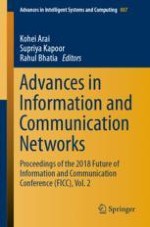The book, gathering the proceedings of the Future of Information and Communication Conference (FICC) 2018, is a remarkable collection of chapters covering a wide range of topics in areas of information and communication technologies and their applications to the real world. It includes 104 papers and posters by pioneering academic researchers, scientists, industrial engineers, and students from all around the world, which contribute to our understanding of relevant trends of current research on communication, data science, ambient intelligence, networking, computing, security and Internet of Things.
This book collects state of the art chapters on all aspects of information science and communication technologies, from classical to intelligent, and covers both theory and applications of the latest technologies and methodologies.
Presenting state-of-the-art intelligent methods and techniques for solving real-world problems along with a vision of the future research, this book is an interesting and useful resource.
